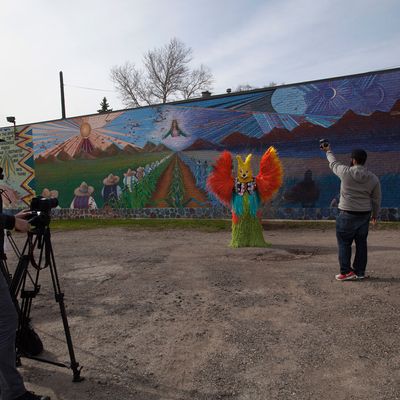
ÔÇ£As an art student,ÔÇØ says artist Nick Cave, ÔÇ£Detroit played a major role in my creative development.ÔÇØ He attended the Cranbrook Academy of Art on the outskirts of that city ÔÇö graduating in 1989. While there, he took full advantage of the cityÔÇÖs incredible cultural heritage ÔÇö from Berry GordyÔÇÖs Motown sound as well to burgeoning underground house music scene left a lasting impression. Now Cave, who is best known for his elaborately decorated, vibrantly colored ÔÇ£SoundsuitsÔÇØ and public happenings that incorporate rhythmic music and dancing, is returning to Detroit to stage ÔÇ£Here Hear,ÔÇØ a seven-month-long series of performances, exhibitions, and ÔÇ£invasions.ÔÇØ
For Cave, ÔÇ£Here HearÔÇØ aims to ÔÇ£jump-startÔÇØ a creative renaissance happening throughout the city. What is happening in Detroit is complicated, intertwined with the fear that new people will bring gentrification, alienating and pricing out longtime residents. By bringing art to underserved communities through a mixture of spontaneous performances ÔÇö what Cave calls ÔÇ£invasionsÔÇØ ÔÇö and organized workshops, he hopes to ÔÇ£interject the everyday experience of Detroit with transcendent moments.ÔÇØ It has already begun.
No stranger to such public displays of revelry, in 2013, he staged ÔÇ£Heard NYÔÇØ in collaboration with Creative Time, a twice-daily performance in Grand CentralÔÇÖs Vanderbilt Hall in which 30 dancers, outfitted in CaveÔÇÖs horselike costumes of colorfully dyed raffia, accompanied by members from the Alvin Ailey performance troupe, danced for 20 minutes amid the surging bustle of everyday commuters. In the case of the horses, as with most of his Soundsuits, Cave draws inspiration from all manner of ceremonial attire and dress, ranging from Haitian voodoo cloth to the elaborate costumes of the Mardi Gras Indians, traveling extensively to observe, as he notes, ÔÇ£all the marvelous ways in which we adorn the body.ÔÇØ
Many of the decorative applications that adorn his costumes ÔÇö toys, buttons, porcelain figurines, and, in once case, an abacus ÔÇö are objects he sources readily at local thrift shops, yard sales, and junk yards. That spirit of creative reuse, Cave is quick to point out, is something he hopes to share through ÔÇ£Here Hear.ÔÇØ ÔÇ£I want the cityÔÇÖs communities to see,ÔÇØ he explains, ÔÇ£that the quality of repurposing that occurs in my works can speak to the period of inspiring renewal that Detroit is currently undergoing.ÔÇØ
ÔÇ£Here HearÔÇØ officially launches on June 20. Cave describes, for SEEN, preparations under way in Detroit, sharing behind-the-scenes images of events leading up to its opening.
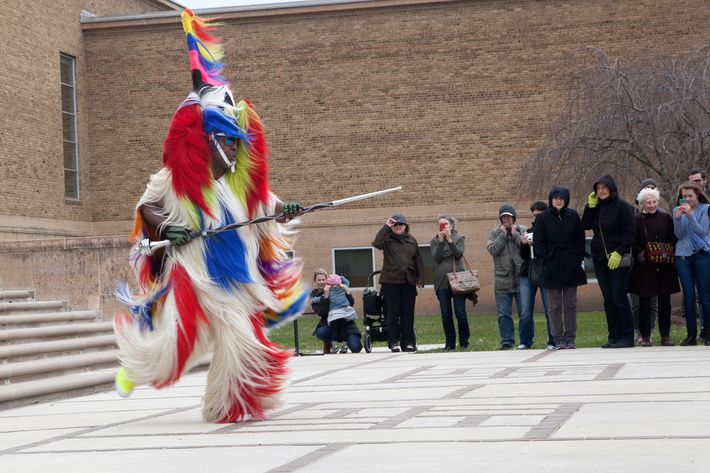
1. Cranbrook Art Museum steps: ÔÇ£Here I was performing what I consider a kick off ceremony for ÔÇÖHere HearÔÇÖ on the steps of the Cranbrook Art Museum, which will house an exhibition of my work concurrent to all the various performances. As you can see, I really am marching to the beat of my own drum.ÔÇØ
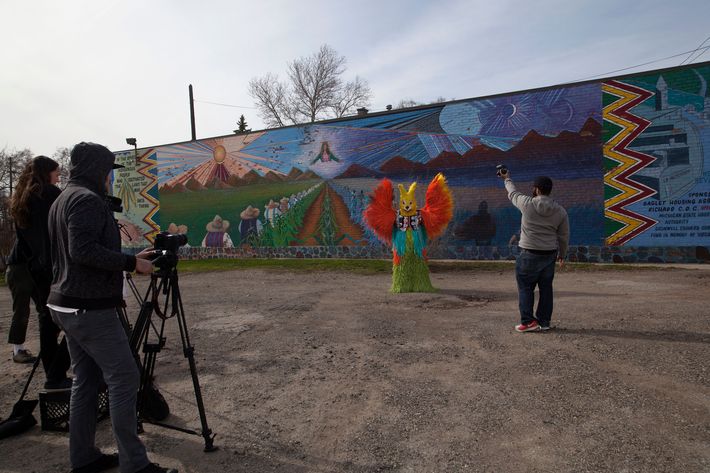
2. Mexicantown: ÔÇ£As part of ÔÇÖHere Hear,ÔÇÖ we are staging a series of ÔÇÿinvasionsÔÇÖ throughout all the communities in Detroit. In this case, I wanted to capture this particular spontaneous performance, but in many cases theyÔÇÖll go totally undocumented, intended solely for whoever is around to see it.ÔÇØ
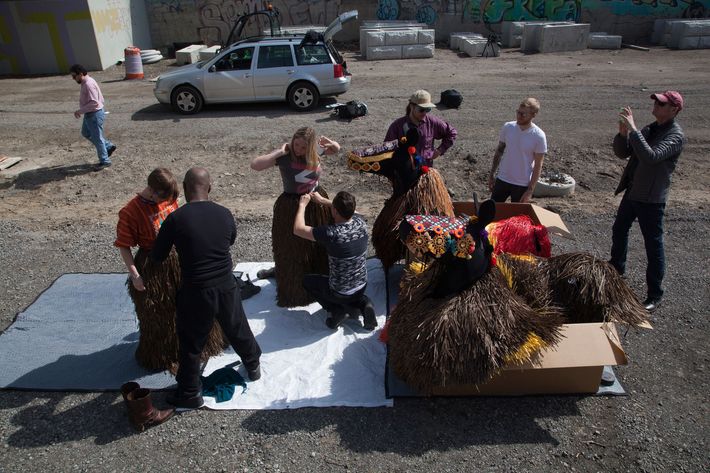
3. Dequinder Cut: ÔÇ£Dequinder Cut is where various performances associated with ÔÇÖHere HearÔÇÖ will be held. IÔÇÖm working closely with the Detroit School of Arts and its students to execute various aspects of my pieces. In the image here, students from its dance school are rehearsing an ÔÇÿinvasionÔÇÖ that will utilize horse costumes similar to those used for ÔÇÿHeard NY.ÔÇÖÔÇØ
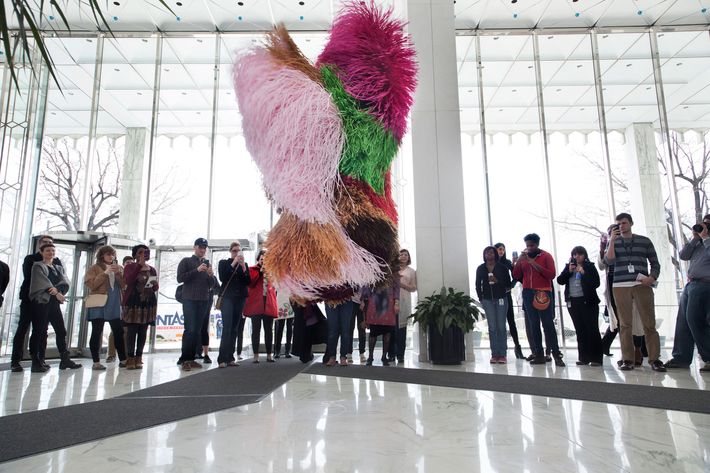
4. One Woodward: ÔÇ£Quicken Loans is among the principal patrons underwriting ÔÇÖHere Hear,ÔÇÖ and to recognize their generous support, we staged an impromptu performance in the lobby of their headquarters.ÔÇØ

